Buying-in Goods and Services
Buying-in or procuring goods and services is a concept that is familiar to just about anyone who has worked in the business environment. Practically every organization has to look outside itself at some point for goods or services. Some organizations have ongoing purchasing requirements that make up a large part of their daily operations, while others only need to procure specific items on a periodic basis.
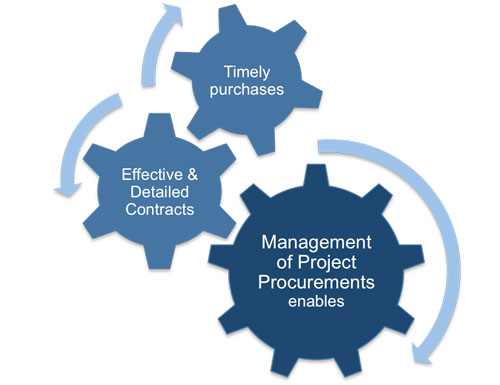 |
However, when a project is being conducted, the need for procurement is very often a major element of the overall process. Procurement management is the process of ensuring that everything required from outside the organization is in place when it is needed so the project can proceed successfully. Failing to plan the procurement process is one of the most-costly mistakes that can be made because the entire project can be brought to a halt if products or materials aren't available when needed.
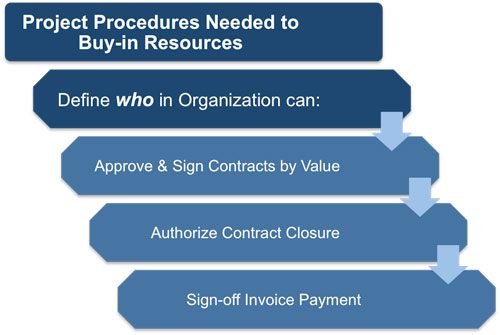 |
Successful projects required detailed scheduling and excellent timing to maximize efficiency. The project manager will need to oversee the buying-in process to ensure that a purchasing failure isn't responsible for harming the project as a whole.
Prior to beginning a project, there should be a careful analysis of what items will need to be purchased from outside the organization to allow the project to reach a successful conclusion. As long as there is a detailed plan in place for the project itself, the procurement planning should be a relatively simple endeavor. After all, it won't take long to determine what is available from within the organization and what will need to be brought in from the outside.
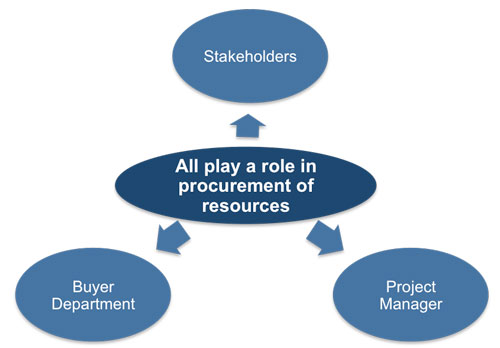 |
Procurement is often thought of in terms of raw materials, but it can actually cover a wide range of items that could be used to complete a project. Even services that will be needed as part of the work would be included under the umbrella of procurement. Knowing what is going to be needed, and when it will be needed, it a crucial first step toward getting this part of project management done correctly.
Pricing and Receiving Bids
Obviously it is important to know how much the goods or services are going to cost the organization as part of the project. In the case of projects where there is a heavy purchasing requirement, the cost of these items could make up a majority of the overall project budget. Naturally, it will be a goal to minimize the total costs while still getting exactly what is needed.
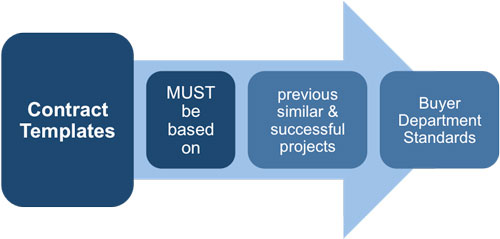 |
Frequently companies will use a bidding process to make sure a competitive and fair price is received. Once it is known what will be needed, you can 'bid out' the order to several different suppliers and compare their prices and terms. The use of contract templates from earlier projects and from within the organization plays a valued role in this process.
Whilst one may be tempted to accept the lowest price it is also important that the supplier is able to meet your schedule for the project. If you need more product than they can supply by a given date, for example, it won't matter what the price is - that supplier won't be able to meet your needs.
After the bidding process, all of the eligible bids can be reviewed and considered carefully. Choosing bids is an important step because you are essentially making these suppliers part of your overall project team. If they were to let you down at some stage along the way, it would be no different than having a failing from within your organization.
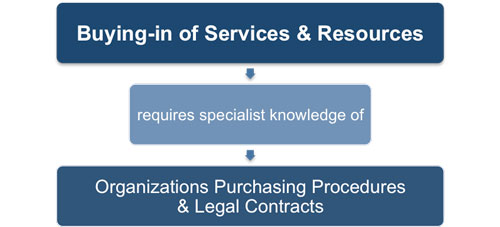 |
You are not only buying product from a supplier, but you are bringing them into your process in a way - so researching the supplier and making sure they can be trusted with that responsibility is also important. You will also need to have access to specialists who have current knowledge of contracts, service level agreements and legal agreements.
Establishing of Contracts
Nothing in business should be done without a contract, especially when it comes to a purchase agreement between two organizations. If you are going to trust a supplier to become part of your project team, you will want a contract in place that outlines their responsibilities and the price you have agreed to pay.
Even if you are dealing with people whom you feel like you can trust, there is no excuse for not having the legal documentation in place to protect your interests at every turn. There are three basic forms of contract - firm fixed price, cost plus, finally time and materials.
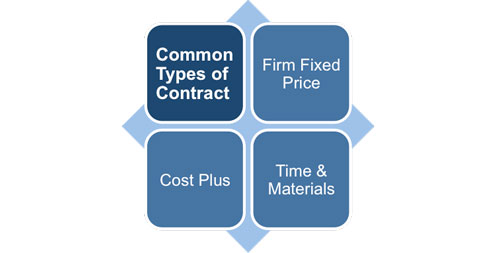 |
Putting procurement contracts in place can often be considered one of the last steps before a project gets started. At this point, you will have committed to buying a certain level of whatever goods or services you need to undertake the project, so the wheels are now in motion to get it going. The procurement plan defines the process of selection and the sources of information used in this decision as shown in the diagram below.
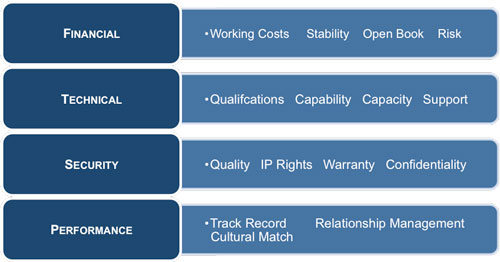 |
Timing is an important element of this whole process, so bringing together the formalization of contracts in concert with the start of the project itself is something to pay attention to. It may take a little bit of back and forth between the organizations (and their lawyers) before the contracts are satisfactory to all involved, so make sure to build negotiating time into the schedule.
The formal nature of purchasing contracts also points out just how important it is that any project be as well-planned and organized as possible right up front. When things change down the line during the course of a project, it can have ripple effects that can be expensive when they require contracts to be changed or broken.
Most projects involve a great number of moving parts that have to be brought together just right in order to keep everything moving toward a common goal. Procurement is one of those parts, and it is an important one since it often involves signing contracts that commit the organization to spending money in pursuit of successfully completing the task.
Once the contracts are in place one of the most important roles of the project manager is to ensure that these contractual relationships are properly controlled and delivers their commitments in a timely fashion and to the agreed quality standards.
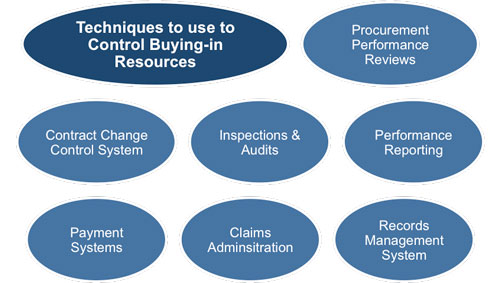 |
Even though procurement is an area of business all its own, it is something that any project manager should be comfortable and familiar with. Whether the project manager directly does the purchasing or simply oversees a specialist in that area, understanding how procurement plays together with the rest of the project management puzzle is an important skill to possess.
You may also be interested in:
Managing Project Costs | Estimating Project Costs | Calculating the Total Project Budget | Monitoring Project Expenditure | Buying-in Goods and Services | Managing Project Suppliers | Planning Contract Management | Understanding Different Contract Options | Managing Supplier Relationships.
|
|


